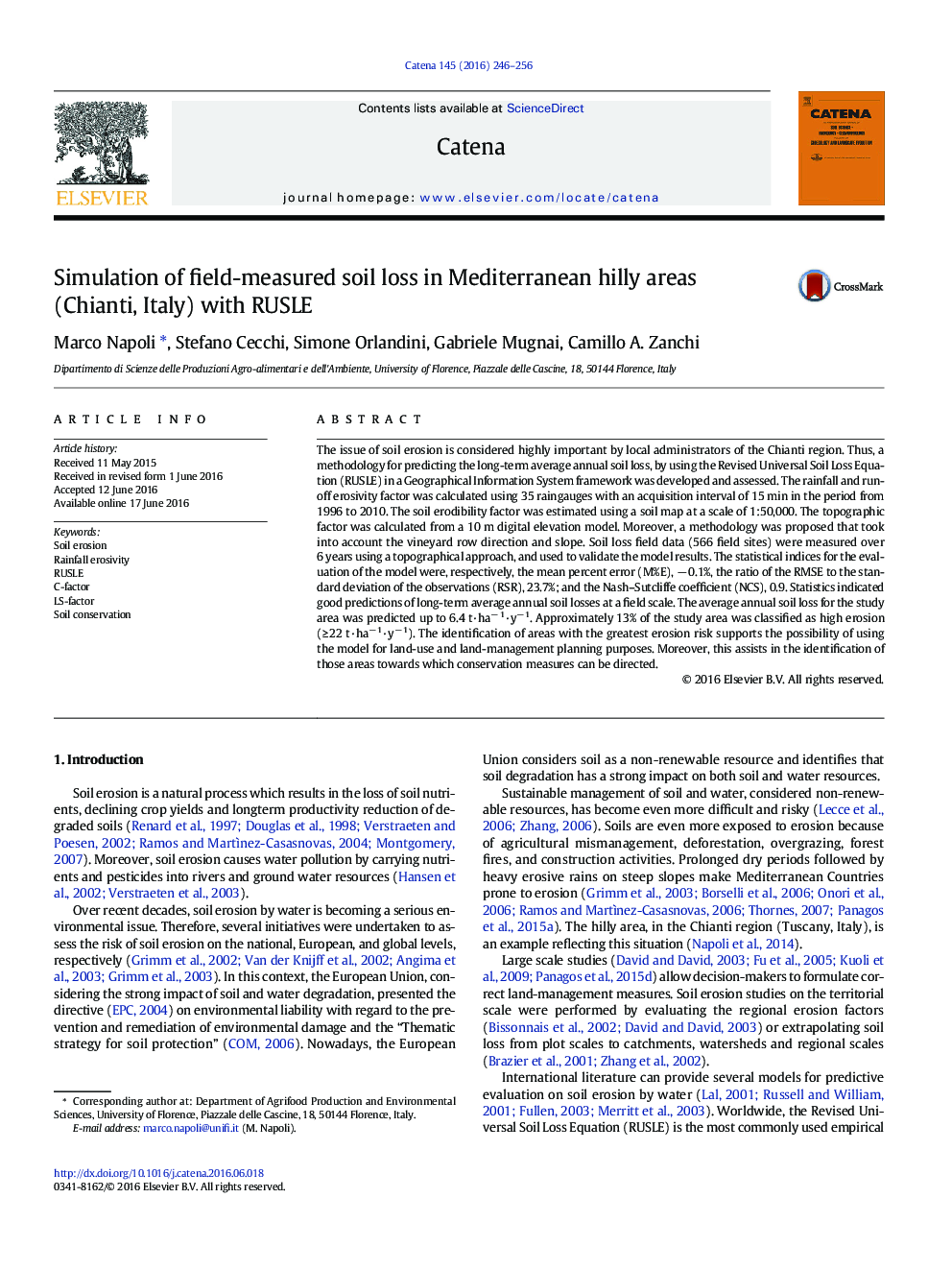| کد مقاله | کد نشریه | سال انتشار | مقاله انگلیسی | نسخه تمام متن |
|---|---|---|---|---|
| 4570899 | 1629207 | 2016 | 11 صفحه PDF | دانلود رایگان |

• High-resolution soil loss map by using the RUSLE in a GIS framework
• A methodology for determining LS factors accounting for vineyard row direction
• All factors used in the RUSLE were calculated using local data.
• Validation was performed versus 566 measured average annual soil loss data.
The issue of soil erosion is considered highly important by local administrators of the Chianti region. Thus, a methodology for predicting the long-term average annual soil loss, by using the Revised Universal Soil Loss Equation (RUSLE) in a Geographical Information System framework was developed and assessed. The rainfall and runoff erosivity factor was calculated using 35 raingauges with an acquisition interval of 15 min in the period from 1996 to 2010. The soil erodibility factor was estimated using a soil map at a scale of 1:50,000. The topographic factor was calculated from a 10 m digital elevation model. Moreover, a methodology was proposed that took into account the vineyard row direction and slope. Soil loss field data (566 field sites) were measured over 6 years using a topographical approach, and used to validate the model results. The statistical indices for the evaluation of the model were, respectively, the mean percent error (M%E), − 0.1%, the ratio of the RMSE to the standard deviation of the observations (RSR), 23.7%; and the Nash–Sutcliffe coefficient (NCS), 0.9. Statistics indicated good predictions of long-term average annual soil losses at a field scale. The average annual soil loss for the study area was predicted up to 6.4 t·ha− 1·y− 1. Approximately 13% of the study area was classified as high erosion (≥ 22 t·ha− 1·y− 1). The identification of areas with the greatest erosion risk supports the possibility of using the model for land-use and land-management planning purposes. Moreover, this assists in the identification of those areas towards which conservation measures can be directed.
Journal: CATENA - Volume 145, October 2016, Pages 246–256